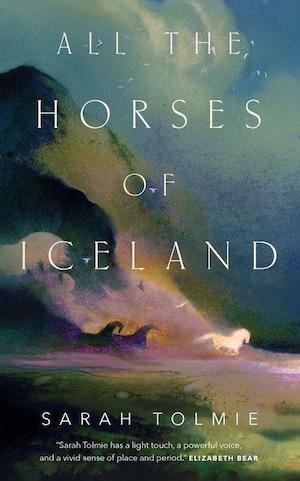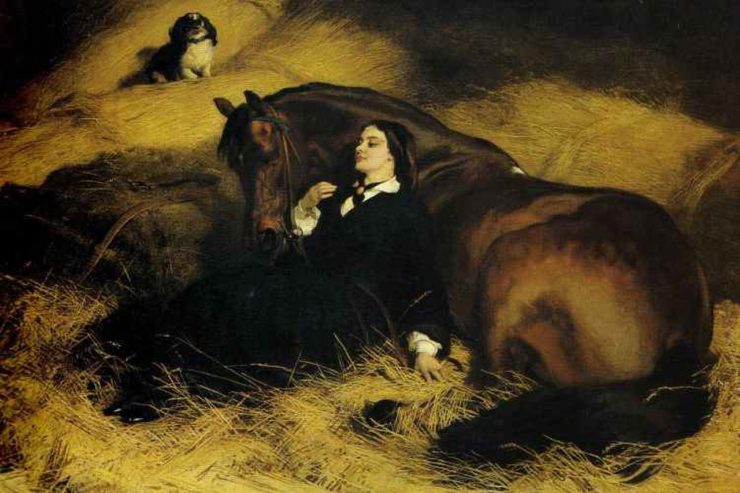I’ve written a ream or two about understanding horses, but it’s also really important for the writer to understand horse people. If you’re one yourself, you get it. If you’re not, there’s a whole world out there, and you can be sure it will let you know if you’ve missed the mark.
If you are a passionate aficionado of anything, you know what I’m talking about. Fandoms have their own language, their own codes for everything from attitudes to behavior. As the lament for Gandalf goes, In their own secret tongues he spoke. If you aren’t a native speaker, you can still be a Gandalf. You can learn enough to get it right.
Like genre fandom, the horse world is wide and varied. Western pleasure people are distinct from people who trail ride in Western saddles. Reining people, cutting people, team penning people. Halter people. Quarter Horse people, Appaloosa people, Paint people. The different types and disciplines may overlap, but each is still its own thing.
And that’s not even touching on the world called “English” mostly by people who don’t ride that way. Hunters, jumpers, eventers, dressage people. Saddle Seat show people, hunter seat show people, breed-show people: Saddlebreds, Morgans, Arabians. Endurance riders are mostly riding in their own kind of saddles, more analogous to English than Western, but not necessarily. And they’re not quite the same as competitive trail people. Or sidesaddle people, who may prefer to say they ride aside.
Then there are the driving people. Fine harness people. Carriage dressage people. People who drive for fun, and people who drive competitively. Draft-horse people, whose horses may pull coaches or chuck wagons or beer wagons, or who may work in the woods or on the farm, pulling logs or clearing land or plowing fields.
Buy the Book


All the Horses of Iceland
And let’s not forget rodeo people. Or jousters or gymkhana competitors or barrel racers or trick riders. Or circus and carnival people. Or liberty-horse people. Or professional trainers. Or breeders. Or, most certainly and lucratively, racehorse people.
What they all have in common is a passion for horses and for their own corner of the species and the sport. Sometimes that passion goes overboard. Horse people clash over everything from the correct palette of colors for a show coat, to the cut of that coat, to the color and conformation of the horse being ridden or driven. They come to metaphorical and sometimes even physical blows over show rules, tack styles, type and quality of gaits, and oh lord, breed standards. What’s correct? What’s not? How far can, or should, form diverge from function?
It’s all part of the world that is horses and the demographic that is horse people. As is the fact that, paradoxical as it may seem, not every horse person necessarily loves horses. For some, it’s about money or prestige. It may be about winning, or it may be about keeping up the family business. It may not be about the horse as a person, as an individual personality, but about the use that can be made of it. An investment. Sports equipment. Maybe you admire the finely tuned machine that does the job, but you may not be particularly interested in how that machine thinks or feels—or even whether it does. Just in how it performs.
Even the fantasy writer has to keep all of this in mind, especially if it’s historical fantasy. The eighteenth-century English nobleman will not be grabbing the saddle horn as he thunders across the moors, nor will the medieval knight be showing off their beautiful Friesian stallion, Ladyhawke notwithstanding. Secondary-world fantasy may allow more latitude, but it’s still important to get the details right; to understand the basics of whichever equine subculture the world is based on.
And particularly to understand the most important thing of all: that to a horse person, the horse is everything. Maybe it’s equipment, but that equipment is the key to everything the horse person is and does. Even if they aren’t directly responsible for the care and feeding, they’re aware of the necessity for both. The horse is on their mind pretty much constantly, however subliminally.
That’s one of the signs a horse person spots in a book or game or film, that the writer isn’t a horse person. The horse is incidental. The characters don’t focus on it. They only think about it when they want to use it. Even then, they won’t consider its needs as a living organism. They’ll leap on and gallop off without a warmup, they’ll gallop for hours or days without breaks for rest or food, they’ll leap off and go on about their business, leaving the horse to fend for itself. There’s no concern for the horse’s well-being, only for its use as a means to get from one scene to the next.
One thing I find endearing about the very silly and egregiously fake-historical holiday film, The Knight Before Christmas, is that the knight cares deeply about his horse. The horse has a name, and something remotely resembling a personality. In fact, I could argue that real romance isn’t with the modern girl, it’s with the horse. For me, that tracks.
There’s a bit of that in The Green Knight, too—and that happens to be based on the original poem; Gawain’s horse not only has a name, he’s important to the plot. I squawked at the way he’s blown off in the film, once the plot wanders off into the weird and the wild. But at least the knight, whose horse is his most important piece of equipment, takes a few moments to acknowledge the fact. That’s better than we usually get.
And it’s indicative of what a horse person is. We notice the horse first. Then the rest of the film, humans included. That’s our center. That’s what we live for.
Judith Tarr is a lifelong horse person. She supports her habit by writing works of fantasy and science fiction as well as historical novels, many of which have been published as ebooks. She’s written a primer for writers who want to write about horses: Writing Horses: The Fine Art of Getting It Right. She lives near Tucson, Arizona with a herd of Lipizzans, a clowder of cats, and a blue-eyed dog.










